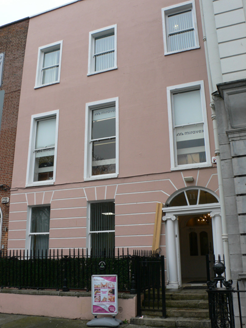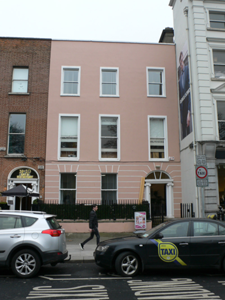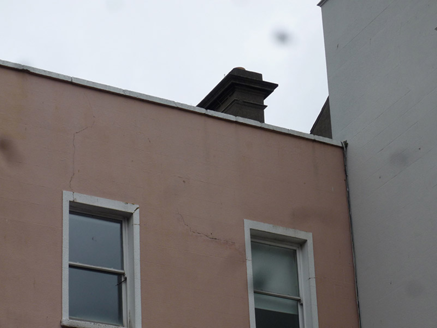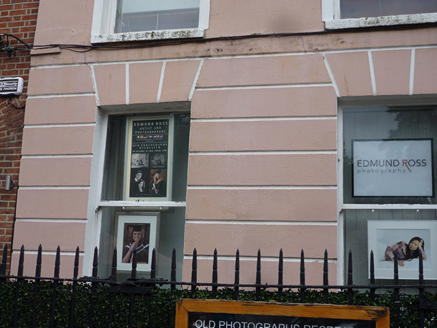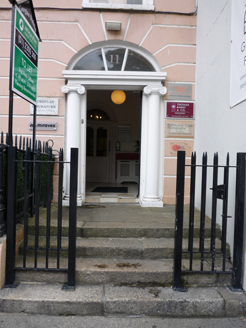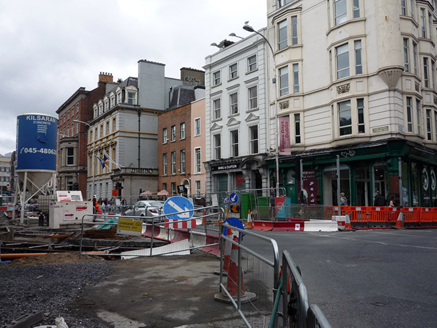Survey Data
Reg No
50100142
Rating
Regional
Categories of Special Interest
Architectural, Artistic
Original Use
House
In Use As
Shop/retail outlet
Date
1800 - 1840
Coordinates
316008, 233553
Date Recorded
11/07/2016
Date Updated
--/--/--
Description
Attached three-bay three-storey former house over basement, built c. 1820. Abutted to rear by two-storey additions and having oriel window to first floor of rear. Now in commercial use. Half-hipped pitched slate roof running perpendicular to street with smaller pitched roof alongside to east; parapet with painted masonry coping and concealed rainwater goods. Brick chimneystack to middle of western pitch. Ruled-and-lined painted rendered walling over channel rusticated ground floor and ruled-and-lined painted rendered basement walling; rendered to rear. Square-headed window openings, diminishing in height to upper floors, with painted rendered architraves and sills. One-over-one pane timber sliding sash windows; replacement uPVC casements to basement behind iron grilles. Elliptical-headed door opening, with Ionic doorcase having partially engaged Ionic columns with plinth base, capitals supporting plain lintel cornice, plain fanlight with two glazing bars, and replacement four-panel timber door with brass furniture. Granite entrance platform bridging basement, with four granite steps to street level. Basement area enclosed by wrought-iron railings with decorative cast-iron corner posts on tall painted plinth wall with granite coping. Recent steel gate to entrance steps. Building set back from general building line.
Appraisal
No. 10 Saint Stephen's Green is a handsome and well-proportioned house that forms a cohesive pair with No. 10 to the west. Built on the site of an earlier larger house, possibly late seventeenth-century, as depicted on Rocque's map of 1756. The unusual triple-span roof, unusual fenestration and high parapet suggests modification of an earlier structure. The early nineteenth-century façade is distinguished by a Greek Ionic doorcase and, despite some fabric modifications, the building represents one of the few surviving links to the early origins of Saint Stephen's Green.
